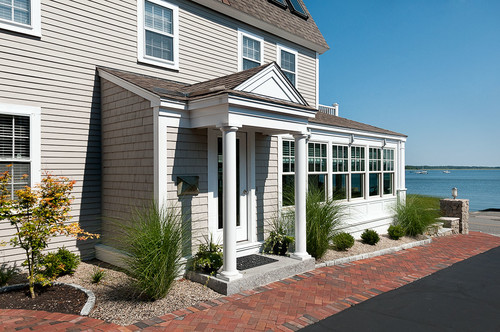Portico Perfection
Porticoes are not only stylish additions to the front entrance of a home, but also functional. A portico is defined simply as “a small entrance porch” by the Pennsylvania Historical & Museum Commission, while Houzz describes it as a roof supported by columns that create a covered porch, entrance or walkway. It’s the spot outside an entrance where you can seek shelter from the elements while finding your key or greeting guests. Porticoes also offer protection to the home itself, keeping rain, snow and wind off of the door, hardware and stoop.
In ancient Greece, porticoes were used as public gathering places and were long, open structures where shops were frequently located. The tapered columns that supported ancient Greek porticoes and are associated with classical architecture can still be seen today. The Greeks had special names for porticoes depending on how many columns they had. For example, tetrastyle porticoes have four columns.
The classical-style portico is commonly found on modern-day Colonial-style homes. The tapered columns and ornate trim work draw attention to the symmetrical facade as well as the central chimney and front door seen in traditional Colonial-style homes. However, porticoes have evolved into many different styles over the years. Their columns may be square. Their roofs may be arched rather than gabled. They can be narrow or wide. The sides can be either open or closed. They can even be more than one story tall.
They may share similar architectural features, but porticoes are different from porches. Porches are designed as outdoor living areas for social purposes in contrast to porticoes, which are not meant for lingering.
Now that you know the some of differences between as well as some of the features and history of porticoes and porches, which one would you choose for the front of your home? Leave a comment below to share with us.
For help with your next renovation or new build project, contact TMS Architects. Visit our portfolio to see examples of our work.






